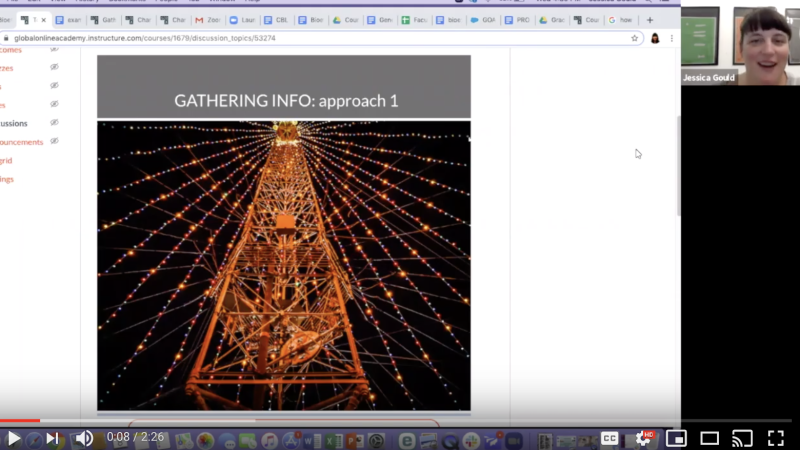Competency-Based Learning in Action: How Do You Design for Feedback and Self-Reflection?
As teachers look to transition to a competency-based learning approach in their classrooms, one of the major shifts they’ll have to make is moving from grading to feedback. CBL educators prioritize specific, actionable, formative feedback during the learning process, when students can use it, over a focus on calculating and delivering a grade for a summative assessment at the end of a learning experience.
When Global Online Academy (GOA) travels to schools to facilitate CBL professional learning, one of the design sprints we lead educators through involves crafting rubrics that explicitly articulate competencies and learning outcomes in a student-friendly way. This process supports educators in rejecting traditional, reductive grading practices in favor of emphasizing clear evidence of competency development. In line with the writings of Ruth Butler and Thomas Guskey, these rubrics facilitate task-involving feedback that also provides students with guidance and direction from their teachers about what to do to get better. As a result, these rubrics become tools for ongoing communication and reflection on learning, rather than evaluation.
Beyond receiving timely, differentiated learning support based on their needs, students are also able to use these competency-based rubrics to self-assess, thereby exercising a greater sense of agency and ownership over their learning.
Below, GOA Global Health teacher and Lincoln Community School educator, Jessica Gould, walks through how she uses competencies and learning outcomes to frame her assignments in order to provide high quality feedback. One unique feature of her approach is that she takes the time to teach her students how to use rubrics to self-reflect and seek out evidence of competency development on their own.
“I slowly start leading students towards self-assessing and being able to look at their own work and find evidence of these competencies to the point that they actually will fill out a rubric and say ‘here’s where I achieved these and this is how I did it.’ ”
CBL in Action: How do you design for student feedback and self-reflection?
Jessica Gould, Lincoln Community School
This blog post is part of a series called Competency-Based Learning (CBL) in Action. We invite you to join us in sharing a video response to this question, “How do you use competencies to design for feedback and self-reflection?” on Twitter using the hashtag #CBLin Action and tagging us @GOALearning. If you are a teacher in a competency-based learning course or classroom and are interested in being interviewed for an upcoming blog post, please email us at hello@globalonlineacademy.org.

